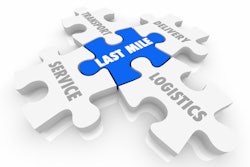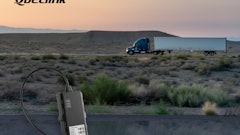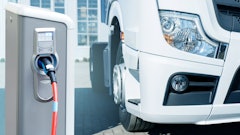
Today, efficiency is the new growth strategy. Many businesses increasingly prioritize efficiency over expansion in today's evolving economic landscape. Right-sizing isn't about arbitrary reductions; it's about ensuring each vehicle serves a strategic purpose, aligning fleet size with demand, operational requirements, and cost-effectiveness.
The U.S. truck leasing and rental market was valued at approximately $3.41 billion in 2023 and is projected to reach $4.97 billion by 2029, growing at a compound annual growth rate (CAGR) of 6.55% during this period. Traditionally, fleet growth was synonymous with business success. However, current economic indicators suggest a shift. Rising operational costs, fluctuating fuel prices, and supply chain challenges have prompted fleet managers to reconsider the sustainability of maintaining oversized fleets.
Right-sizing—aligning your fleet's size and composition with actual operational needs—has become a focal point, especially as companies explore flexible, on-demand mobility solutions. For fleet operators, this means reassessing fleet sizes to optimize productivity and control costs.
The hidden costs of an oversized fleet
Maintaining an oversized fleet can lead to several inefficiencies:
· Elevated ownership and leasing expenses. Underutilized vehicles still incur leasing fees, depreciation, and financing costs.
· Increased maintenance and repairs. A larger fleet results in higher maintenance expenses and unplanned repairs.
· Excessive fuel consumption. Unnecessary vehicles contribute to increased fuel usage, impacting operational costs.
· Operational complexity. Managing a surplus of vehicles adds administrative burdens, requiring more staff and resources.
Strategies for effective right-sizing
A data-driven approach to fleet size can lead to significant cost savings and operational improvements. Implementing a successful right-sizing strategy involves many of the following imperatives:
· Analyzing fleet utilization data. Utilize telematics and fleet management software to assess vehicle usage patterns. Metrics such as miles driven, idle time, and trip frequency can identify underutilized vehicles. Notably, 83% of fleet operators now use telematics to monitor such data.
· Adopting flexible mobility solutions. Consider vehicle-sharing strategies that can significantly enhance fleet utilization, control budgets, and reduce environmental impact. Adopting flexible mobility solutions, such as vehicle-sharing. A key component of this approach is Mobility-as-a-Service (MaaS), which integrates various transportation services into a single accessible platform.
· Implementing predictive maintenance. Leverage predictive maintenance technologies to anticipate and address vehicle issues before they lead to breakdowns, thereby reducing downtime and maintenance costs. This proactive approach ensures vehicles are in optimal condition, supporting efficient operations.
· Aligning fleet composition with operational needs. Evaluate whether your fleet has the appropriate mix of vehicle types and sizes to meet current operational demands efficiently. This may involve replacing larger, less efficient vehicles with more fuel-efficient models or integrating electric vehicles to help reduce emissions and fuel costs.
· Integrating advanced fleet management technologies. Embrace technologies such as AI and IoT to enhance route planning, monitor driver behavior, and improve overall fleet efficiency. Integrating these technologies can change fleet management systems, leading to more informed decision-making and optimized operations.
The competitive advantage of right-sizing
Companies that effectively right-size their fleets benefit from cost savings, increased flexibility, and improved efficiency. They are better positioned to adapt to market changes without the burden of excess assets.
Empowering fleet operators and managers with the insights and tools needed to optimize their operations and achieve their business objectives is critical to their success.
Is it time to right-size your fleet? If your fleet isn't optimized for efficiency, now is the time to act.


















